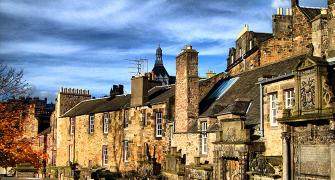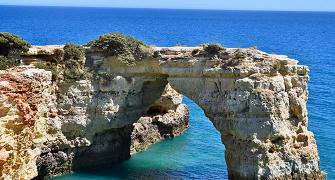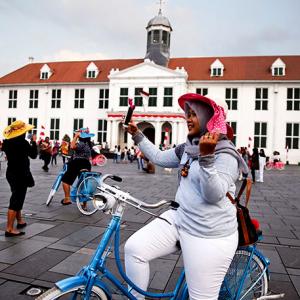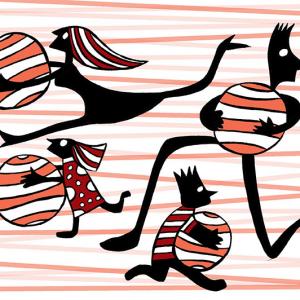In Part III of her Switzerland diary Geetanjali Krishna discovers that Swiss sojourn may start at Alpines but its real charm lies in Interlaken.
Part 1: The fully filmi Indians of the Swiss Alps
Part 2: Lucerne, a city from a fairytale
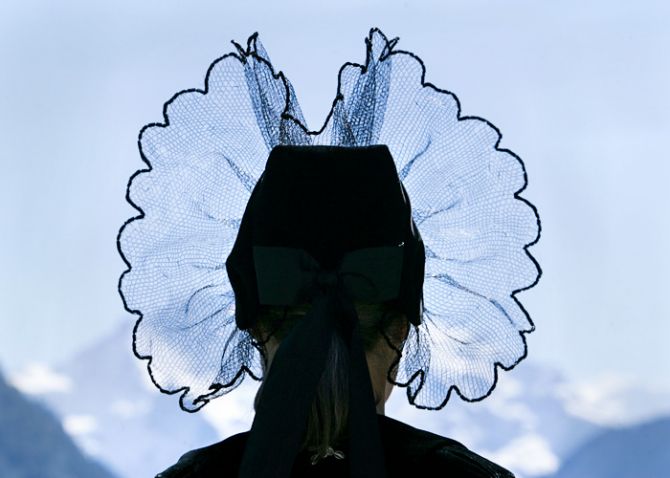
Photograph: Stefan Wermuth/Reuters.
The setting sun casts a peachy glow on the snow-capped mountains as the lone parasailer soars up for the day's last sortie.
"They say you can see the Jungfrau, Monch and Eiger from up there," says the old man sitting next to me on a bench in the Höhematte. A lifelong hiking enthusiast, he's never tried parasailing, he says.
"I don't think I've missed much though," he says. "Perhaps it is because in Interlaken, I feel that heaven is not only above, but all around you."
He has a point, I muse as I look around me.
Interlaken is located along not one, but two stunning lakes -- Brienz and Thun.
It is the gateway to the Bernese Alps, with over 45 mountain railways, cable cars, chair lifts and ski lifts to ferry skiers and hikers to over 200 km of pistes and a dense network of walking trails.
Having just spent several days hiking, I'm content to take his word for it for the time being. Over a cup of coffee, I watch the world go by the Höheweg, the flower-lined boulevard of boutiques and restaurants that stretches from Interlaken West to Interlaken East.
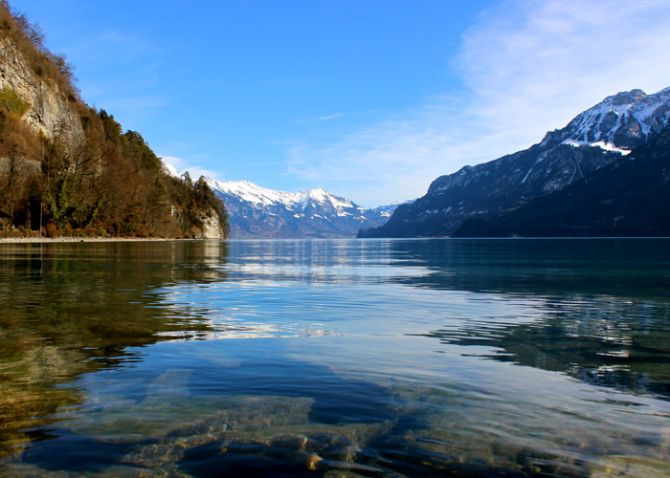
Photograph: Daniel Huizinga/Flickr.
It takes some superlative cheese fondue and a good night's sleep to get my aching calves out of bed the next morning.
We've planned to spend the day cruising along Lake Brienz to further rest our over-worked muscles.
The boat sets sail, giving us the chance to see how locals enjoy their weekends here. They're out in full force with their picnic baskets, kayaks and soccer balls. Wherever there's a little strip of beach, people are sunbathing.
Ahead, we espy a mysterious chalet nestled in a densely forested mountain. Next to it, there's a magnificent waterfall.
It's the historic Hotel Giessbach, known for fabulous views and mountain walks. Moreover, it is home to the oldest operational funicular in Switzerland.
The hotel terrace is pleasantly shaded with some of the most enchanting views of the Brienz. We order a selection of their sirops infused with alpine herbs and settle down to a long lunch.
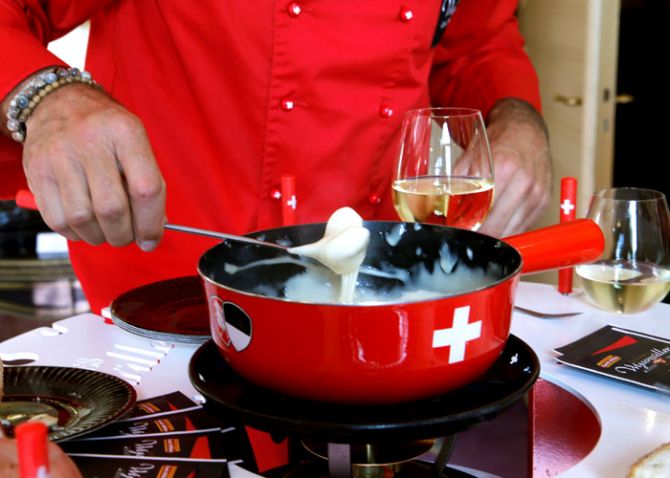
Photograph: Denis Balibouse/Reuters.
Having spent the day on Lake Brienz, we decide to spend the evening on Lake Thun.
Youths are playing soccer on its grassy banks even as early diners throng the lakeside restaurant. Music wafts across the water from a distant café.
It seems inconceivable that a place so serene could hold any dark secrets, but it is said that in the early 2000s, Lake Thun's meagre fish population displayed severe deformities and genetic anomalies. Perhaps it is because after World War II, thousands of tonnes of unused munitions were supposedly dumped into it. The situation seems to have improved since then but I know what I'm definitely not ordering for dinner tonight.
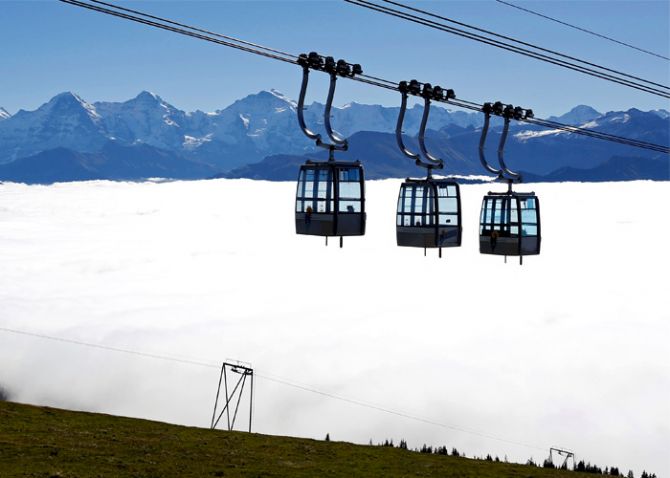
Interlaken is the gateway to the Bernese Alps, with over 45 mountain railways, cable cars, chair lifts and ski lifts to ferry skiers and hikers to over 200 km of pistes.
Photograph: Ruben Sprich/Reuters.
Interlaken's hiking and skiing opportunities, we discover during the next few days, are unparalleled.
Of course one can go to its most famous attraction, Jungfraujoch, but there are several others closer home that are as scenic.
The Harderkulm to the north and the Schynige Platte to the south of Interlaken are easily accessed by train and offer some incredibly scenic vistas. The useful Swiss Pass (it's really the only way to enjoy a Swiss sojourn without breaking the bank) either includes most of these trips, or ensures a heavily discounted rate. However, at the fag end of a longish trip to Switzerland, we're fairly "alped out," so as to speak.
Instead we go for long walks, picnic in meadows, find waterfalls to bathe in and sample the country's ample culinary bounty -- and discover this is pretty much what locals do in summer. So while their high mountain tops are full of tourists, mostly Japanese and Indian, locals spend their weekends on Interlaken's less obvious charms.
All too soon, it's time for the final amble down the Hoheweg.
Tourists pass by in a horse-drawn carriage, pointing at the many kiosks advertising parasailing and other strenuous pastimes. I give them all wide berth, making for the same bench I'd found on our first evening in Interlaken. The Jungfrau gleams in the distance, and I muse that it is the serenity of Interlaken I'll remember, long after the aches and pains of our alpine hiking have subsided.


